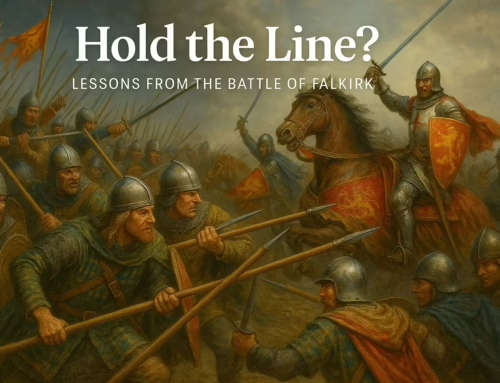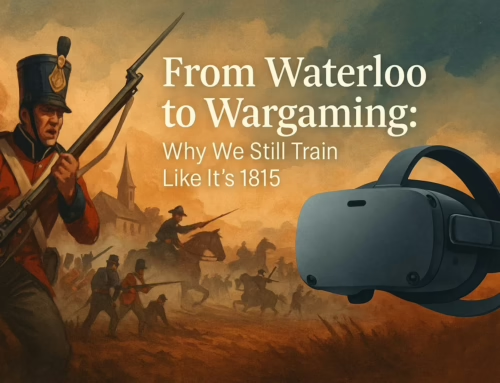In law enforcement, no moment is more scrutinised, or more consequential, than a use-of-force encounter. At the heart of every reform debate, training protocol, or legal proceeding lies one pressing question:
How do you prepare officers to make the right decision under extreme pressure, when there’s no time to think?
This is no longer a question of classroom theory or simple marksmanship drills. It’s a biological, neurological, and tactical challenge, one that modern science and immersive technology are finally starting to answer.
The Cognitive Cost of Violence
During a violent encounter, the human brain behaves in fundamentally different ways. Under sudden threat, analytical thinking collapses. Officers don’t “choose” a response; they fall back on trained reflexes, guided by recognition of patterns they may not consciously process.
And that’s where the challenge begins.
In close-quarter ambushes, the reaction time deficit can be fatal. Research shows that for an officer to respond at the same time an attacker initiates movement, they’d need to start drawing their weapon a full second before the threat even appears. The implication is stark: by the time you realise what’s happening, you’re already behind.
Gut Decisions, Trained Responses
In these scenarios, officers rely on what’s called naturalistic decision-making, split-second judgement rooted in experience and training. It’s not theory. It’s muscle memory, instinct, and gaze control. And it must be built long before the moment of truth arrives.
But traditional training, particularly static range work, fails to replicate this kind of pressure or decision complexity. Qualification is not preparation. As one veteran officer put it: “Most of what we did was about passing a test, not preparing for the street.”
Virtual Reality: Real Pressure, Safe Environment
This is where virtual reality (VR) training platforms like BattleVR and Archer come in. By replicating chaotic real-world scenarios with immersive fidelity, VR enables officers to experience the cognitive load of a violent confrontation—without the real-world risk or resource drain.
- BattleVR delivers full 360° threat engagement in mobile or installed environments with haptic suits and synthetic weapons, recreating the physical and psychological realities of combat.
- Archer offers scalable judgmental training and marksmanship with branching video and live-fire integration, allowing scenario-based decision-making to be evaluated and improved over time.
The benefits are clear. A Ministry of Defence study found that immersive VR training was just as practical at building decision-making skills as expensive live-fire exercises, far outperforming traditional video-based programmes.
From Reflexes to Recognition: Training the Expert Gaze
One of the most compelling breakthroughs in the science of training isn’t about faster hands, it’s about sharper eyes.
Eye-tracking studies show that expert officers immediately focus on what matters most: a suspect’s hands and waistband—where threats typically emerge. Novices scan randomly. Experts lock in.
And crucially, this skill can be taught.
German police research showed that officers trained in gaze control made significantly fewer errors in shoot/don’t shoot scenarios. It’s not guesswork, it’s neuro-visual conditioning.
Measuring the Brain Under Fire
Beyond performance outcomes, tools like functional near-infrared spectroscopy (fNIRS) now allow trainers to see how an officer’s brain performs in high-stress scenarios. This isn’t science fiction. It’s operational neuroscience, and it’s helping instructors not just judge what happened, but why it happened.
Real Impact, Measurable Results
Consider this:
- The U.S. Marine Corps projects $17 million in savings over ten years by supplementing live-fire training with simulation.
- German police saw a 43% improvement in reaction times among experienced officers using cognitive training methods.
- One VR training study showed up to 30% improvement in decision accuracy—even with only 0.5 seconds to respond.
This isn’t an incremental improvement. It’s an exponential capability gain.
Rethinking the Endgame
All of this progress forces us to step back and ask bigger questions. If we can now reliably train officers to perform under stress—better than ever before—shouldn’t we also be re-examining when and how those stress encounters occur in the first place?
Countries with routinely unarmed police, such as the UK or New Zealand, see eight times fewer fatal police shootings than their routinely armed counterparts. Technology is improving training. But policy still shapes outcomes.
Final Thought
Training officers for these moments isn’t about courage or character. It’s about preparation, systems, and design. And we finally have the tools to get it right.
Agincourt’s synthetic training platforms are built from the ground up to meet this exact challenge—combining immersive realism, tactical relevance, and full accountability through integrated systems like Herald and KeepBox.
If you’re rethinking how your agency or unit prepares for the most challenging moments—it starts here.
Learn more: www.agincourt.io
Contact us: info@agincourt.io | +44 (0) 845 481 1010




